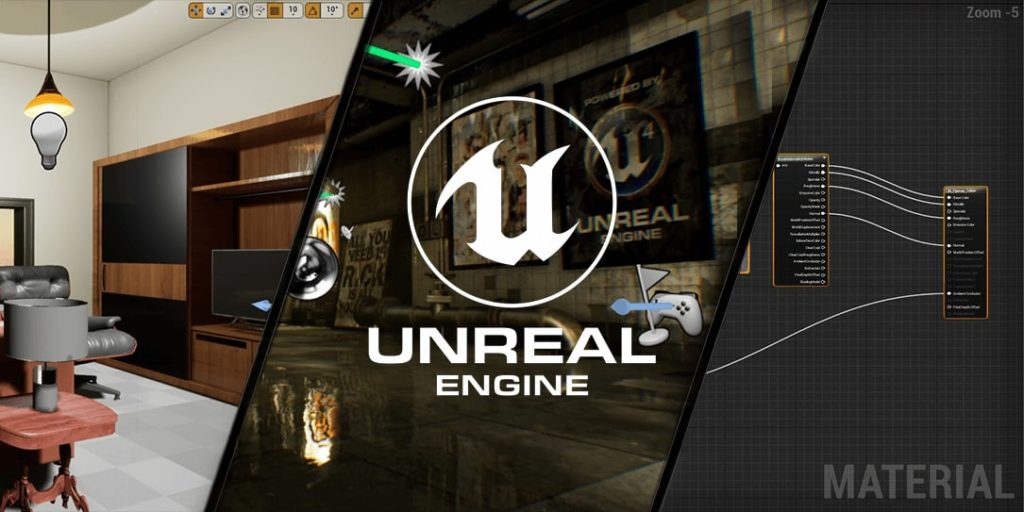I. Introduction Unreal Engine
We are IndiePump, your trusty guide and marketing gurus for all things indie gaming, and we’re thrilled to welcome you to a comprehensive exploration of the Unreal Editor. We’re not just talking about a quick walkthrough; this is going to be your hands-on, beginner-friendly guide to creating worlds that were until now, just fantasies in your creative mind. The Unreal Editor, a key player in the Unreal Engine suite, is set to become your best friend in creating interactive, immersive experiences.
II. Understanding Unreal Editor
When we say Unreal Editor, we want you to think playground. A digital sandbox where all your wildest game concepts find the tools to become reality. From sculpting intricate landscapes and designing dynamic characters, to setting up mind-boggling gameplay mechanics – Unreal Editor provides you with the control panel. It’s designed to be your command center, helping you navigate the creative process with a host of tools and panels. Overwhelmed? Don’t be! We’re about to simplify it all for you, step by step.

III. Getting Started with Unreal Editor
So, how do you enter this incredible world of creation? The first step is surprisingly simple. You need to head over to the Unreal Engine website, download the engine, and follow the installation process. Once installed, fire up the program, start a new project, and there you are – standing at the door of the Unreal Editor interface. We understand it may seem like a complex labyrinth now, but with IndiePump guiding you, it’s going to feel like your second home soon enough.
IV. Exploring the Unreal Editor Interface
The Unreal Editor interface is your dashboard, your control tower, and it’s divided into several key sections: the Toolbar, Viewport, Content Browser, World Outliner, and Details Panel. Each one of these sections plays a crucial role in your game development process. Picture this: The Toolbar is your control panel full of essential tools; the Viewport is your window into the world you’re creating; the Content Browser is your treasure chest of resources; the World Outliner is your game world’s directory; and the Details Panel is your fine-tuning station for the properties of selected objects. It’s a lot, we know, but we’re going to dissect each of these sections together.

V. Deep Dive into the Various Tools
Let’s shine a spotlight on the heroes of the Toolbar: the Selection, Translation, Rotation, and Scaling tools. They are like your trusted crew, each serving a unique purpose. The Selection tool helps you pick out objects in your scene, while the Translation tool lets you move objects along the X, Y, and Z axes. Need to spin things around a bit? The Rotation tool is your go-to, and when it’s time to resize objects, you’ll love the Scaling tool. By mastering these, you’re well on your way to shaping and controlling objects within your virtual world like a pro.
VI. Customizing Your Unreal Editor Workspace
A personalized workspace can do wonders for productivity. The Unreal Editor takes this to heart and provides the flexibility to dock, resize, and hide panels as per your needs. You can organize your workspace just the way you like it and even save these layouts for future use. Need to switch between different tasks? Just load the appropriate workspace layout and you’re set! This way, you’re always in a creative environment that’s tailored to your current task.
VII. Practical Tips and Tricks for Using Unreal Editor
Here at IndiePump, we’re all about working smart, and we love sharing our secret sauce for efficiency. Familiarizing yourself with Unreal Editor shortcuts and useful tips can go a long way in streamlining your process. Hotkeys are like shortcuts on a keyboard, helping you speed through tasks and save precious time. And let’s not forget the importance of keeping an organized Content Browser for easy access to your assets. Oh, and do remember to save your work regularly – you wouldn’t want to lose any of your amazing creations!
VIII. Conclusion
Congratulations on taking the first steps toward mastering the Unreal Editor! This is just the beginning of your exciting journey in game development. As you continue to learn and experiment, always remember to sprinkle a bit of fun into all you do. We at IndiePump can’t wait to see the exciting worlds you’re going to create!
